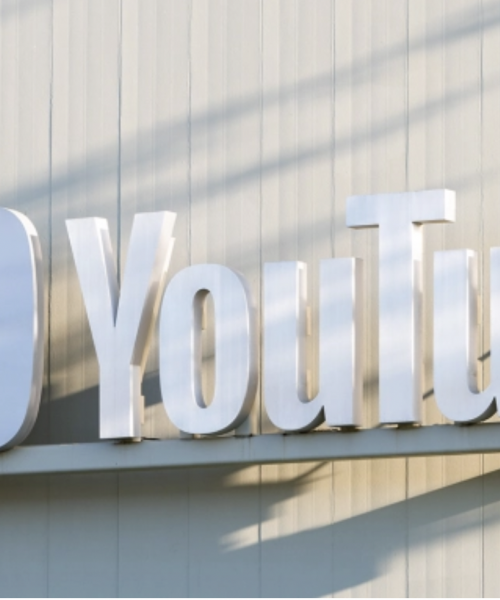BY TATIANA SIEGEL, RICK PORTER | HollywoodReporter.Com
Troy Warren for CNT #Business #Digital
Success is subjective, subscriber bases vary wildly, and confusing metrics math has left Hollywood with little more to go on than “we know hot programming when we see it.”
Back in 2019, WarnerMedia struck a deal for its soon-to-launch streamingplatform HBO Max that secured exclusive domestic streaming rights to The Big Bang Theory for five years. The pact, which sources pegged in the billions, also included an extension of an existing syndication deal with TBS in which the comedy will continue airing on the WarnerMedia-owned network through 2028.
While the syndication side of the deal allows creators, profit participants, reps and even industry observers to gauge how big the TBS audience is, just how many people watch the show on HBO Max remains a mystery.
That’s because syndication viewing numbers, as they’ve always been, are readily available through third-party measurement services, while streaming numbers remain under lock and key. Platforms like HBO Max, Netflix, Apple TV+, Amazon’s Prime Video, Hulu and Paramount+ continue to keep a vise-like grip on their data, and, nearly a decade into the streaming era, the lack of transparency is making it nearly impossible for dealmakers, and even viewers, to define what is a hit and what is a bomb. Unlike traditional box office and ratings numbers, streaming data lives behind an opaque wall, with little chance of reliable metrics emerging anytime soon.
“It’s the curtain,” Big Bang Theory star Simon Helberg told THR in August while on the carpet for the premiere of his film Annette. “They keep all those numbers and all that data behind it. I ended up on the tail end of this bygone era, which is network television. We had 20 million viewers, sales, commercial ad dollars, you see it, you see the viewers, you see the Nielsens,” Helberg continued. “It all changed overnight. That’s probably deliberately a little bit abstract at the moment, and that is concerning. I want people to be compensated fairly. That’s the key — you want to be fair, and you don’t want to stiff any of the creative people.”
According to the current modus operandi, streaming platforms gather reams of data about their users — whether certain titles drive subscriptions, how long people watch a show or movie, how many people finish once they start and cost per user (the ratio of a show’s cost to the size of its audience, among other things).
All of those figures are kept in-house, and in most cases streamers don’t even share basic viewing data publicly. There’s no industrywide currency for viewership data on SVOD platforms in the way that Nielsen ratings have served the traditional TV business for decades or box office figures have measured the performance of features.
Streamers instead offer oblique statements like, “Over the Ted Lassoseason two premiere weekend, Apple TV+ expanded its new viewers by a record-breaking 50 percent week-over-week. … The second season of Ted Lasso increased its viewership by 6x over season one,” to quote an Apple TV+ press release about the Emmy-winning comedy’s season two debut. That release doesn’t state any baseline figures with which to compare the 50 percent week-to-week jump or the sixfold increase for Ted Lasso — like algebra with no way to solve for X — and is typical of public-facing comments from most streamers.
In December 2018, Netflix tweeted, “45,037,125 Netflix accounts have already watched Bird Box,” adding that the Sandra Bullock starrer marked the best first-seven-day showing for a Netflix film to date. At the time, “watched” meant 70 percent of a movie (or 70 percent of one episode of a series). With no way to verify the data, the claim is little more than spin.
WarnerMedia CEO Jason Kilar defends the lack of transparency, at least in these early days of the streaming era. He estimates a rival like Netflix boasts about 20 million more subscribers than HBO Max in the U.S. because of its status as an early entrant in the field. Thus, a hit for HBO Max may have the same number of views as a middling Netflix performer.
“The advantages of being direct-to-consumer is we get an immense amount of data,” Kilar tells THR. “You don’t just see the viewing numbers, you see how they view it. What order do they view things in? How much do they watch? How much do they finish? How do they respond to various prompts to help us get better at helping them find something they love? I wouldn’t expect us or other players to put numbers out just because it’s really hard for people to understand apples-to-apples comparisons. So we labor over it. We know exactly how well these shows are doing.”
Netflix’s recently abandoned two-minute “view” metric, while offering little insight into whether subscribers actually stuck with a show or film, at least allowed for comparison across titles on the biggest streaming outlet. The company said in its third-quarter earnings report that in the future, it will report total hours viewed for its series and films, which will give a somewhat better picture of their reach — and more closely align with the streaming rankings Nielsen has been releasing for the past 14 months that show total minutes viewed for a series or movie each week.
The Nielsen rankings are imperfect as well. Although it collects data on all streamers, only Disney+, Hulu, Netflix, Amazon and, as of mid-October, Apple TV+ have given their OK to be included in the weekly rankings.
A Bloomberg report in October gave the first public accounting of some of Netflix’s key internal data, focusing on the outsized performance of the Korean hit Squid Game. The company uses metrics like completion rates as well as “efficiency” (size of its audience versus how much it costs) and “adjusted view share,” which measures how valuable to the company any given title’s viewers are. Those who use the service less or are new subscribers are considered more valuable than routine bingers. Offering a better glimpse, internal documents leaked to Bloomberg also showed that Netflix paid $24.1 million for Dave Chappelle’s controversial stand-up special The Closer. His previous special, Sticks and Stones, cost $23.6 million but returned an “impact value” of $19.4 million.
THR sent questions to four other major streaming outlets — Apple TV+, Hulu, Netflix and Amazon — asking what and how much data they share with producers, actors and other above-the-line talent on their projects and whether a shared currency for SVOD is important. Apple TV+ and Hulu declined to comment, and the other two didn’t reply by press time.
As streaming’s footprint continues to grow — it already accounts for more than a quarter of all TV usage in the U.S. and regularly surpasses broadcast TV, according to Nielsen estimates — the lack of clarity around just how many people are watching streaming series and films could place a strain on streamers’ relations with producers and talent and their representatives.
“Over a period of time, the streamers are going to have to release more data to those who are creating shows on their platforms,” says UTA co-president Jay Sures. “Whether it’s next week, next month, next year or sometime soon after, it is inevitable. Eventually, there will be a new technology that can give the interested parties accurate data.”
Meanwhile, talent lawyer Joel McKuin, who reps the likes of Kristen Stewart and showrunner Liz Meriwether, says “we know hot programming when we see it,” even without the data. “I don’t know how vital it is to know what the exact numbers are. When you do research and bring them evidence, they invariably say, ‘Oh, we have something else that did better.’ They don’t seem to be straight with you even when you have the goods,” he says. “It’s a bit of a dance. But it always was, even pre-streaming. They would find a way to undermine something’s value. So we’ve become used to not knowing. I’ve become more sanguine about it.”
WarnerMedia Studios and Networks Group chair and CEO Ann Sarnoff argues that the new streaming-dominant landscape has made it difficult to release numbers akin to the ratings or box office data of the past given the complexity of the information and the subjectivity of its value to the streamer. For example, what metric is most important? Subscription acquisitions? Engagement? Or something else entirely?
“[With] TV and the way it used to report, your monetization of a show was how many people watched because the advertisers were buying that,” says Sarnoff. As viewing options expanded beyond real-time linear television, she explains, advertisers decided viewership over time was valuable and the measures changed in response.
“That [was] a much more contained ecosystem than streaming,” Sarnoff continues. “It’s not just your initial view. It’s the behavior of that new sub that comes in the door and what else they watch, and do you keep them?” And, with regard to motion pictures, opening weekend box office used to offer a reliable indicator of ultimate performance. “That’s not true anymore because of COVID, and we don’t know how it’s going to be coming back,” she says. “So I appreciate the desire for data, but I think the data has changed, and it’s not yet been fully vetted in terms of what is the right data for the digital world because it’s not that instantaneous advertiser fulfillment. It’s a much bigger ecosystem and a longer life of the consumer behavior.”
Ultimately, Kilar predicts that two conditions will lead to greater transparency. First, third-party measurers like Nielsen will become more accurate with their streaming numbers. And second, he expects that burgeoning streaming giants will catch up to Netflix. With similar subscriber bases, comparisons with competitors would be more relevant.
“There’s going to be a short list of folks that get to scale, and then I think you’ll probably see a bit more transparency because we all know what we’re dealing with, and you can build businesses and frameworks and other things on top of it,” Kilar says. “But, right now, things are changing so much. And whether you’re talking about Peacock or Paramount+ or Disney+ or Hulu, it’s not the same foundation. So that’s part of why you’re seeing kind of a ‘less than’ [when it comes to sharing data]. If I were in your shoes, I’d want it to distill down to one simple thing — and you get the email in the morning on Saturday and, boom, things are done.”
Chris Gardner contributed to this report.
In Other NEWS



































